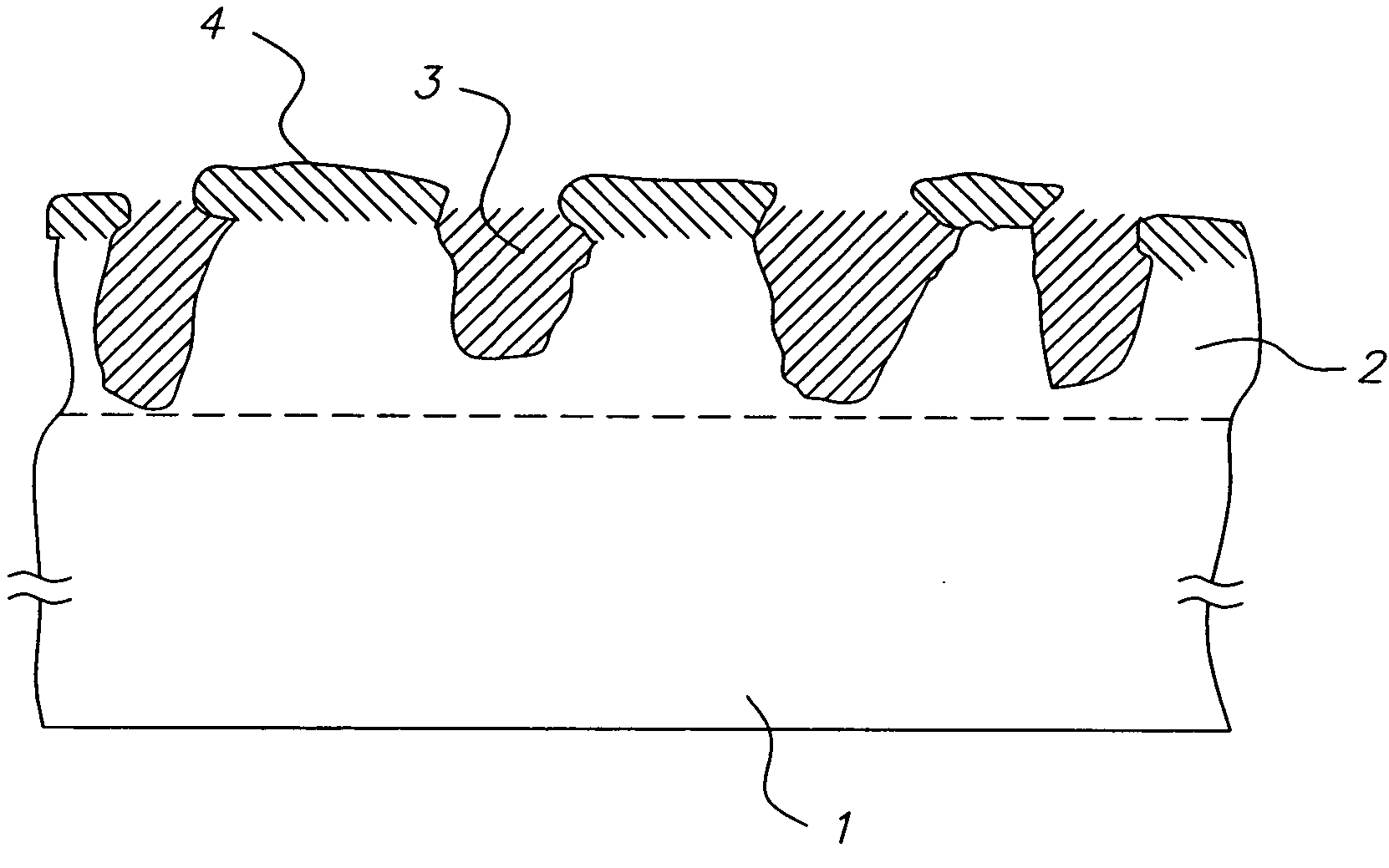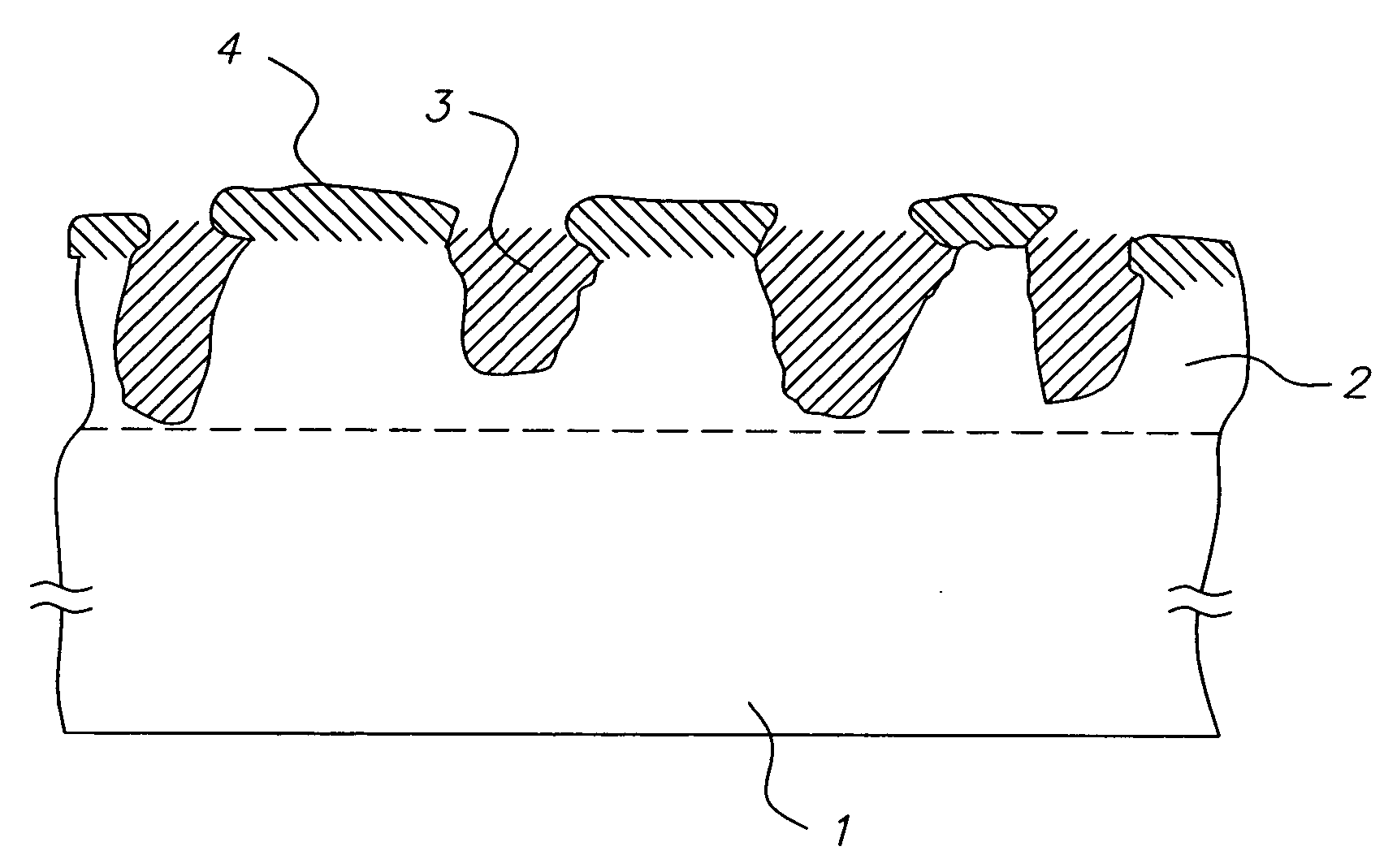Method for preparing a carrier for a photoconductor for the formation of an electrophotographic recording element and a recording element formed accordingly
- Summary
- Abstract
- Description
- Claims
- Application Information
AI Technical Summary
Benefits of technology
Problems solved by technology
Method used
Image
Examples
Embodiment Construction
[0014] In the figure, a substrate 1, or a substrate layer made of aluminum, for example, of a photoconductor of a strip, of a cylinder, or of a collar, for instance, is depicted. This substrate 1 is initially oxidized, for example, by etching or anodizing, and is thus provided with an oxide layer 2 made of Al2O3, for example. As shown and described above, this inorganic blocking or barrier oxide layer 2, is non-homogenous and craterlike or cavernous. In order to level the craters in the oxide layer 2, the craters are preferably filled with a cold water-based impregnating agent 3 that is used, for example, for the conservation of archeological findings, particularly those findings made of wood, as disclosed in U.S. Pat. No. 6,022,589, issued on Feb. 8, 2000, in the name of Jerome M. Klosowski et al.
[0015] Subsequently, for additional oxidation, the surface that is filled with the impregnating agent 3 is rinsed with preferably, warm water that is enriched with ozone (O2 and / or O3), s...
PUM
| Property | Measurement | Unit |
|---|---|---|
| Length | aaaaa | aaaaa |
| Length | aaaaa | aaaaa |
Abstract
Description
Claims
Application Information
 Login to View More
Login to View More - R&D
- Intellectual Property
- Life Sciences
- Materials
- Tech Scout
- Unparalleled Data Quality
- Higher Quality Content
- 60% Fewer Hallucinations
Browse by: Latest US Patents, China's latest patents, Technical Efficacy Thesaurus, Application Domain, Technology Topic, Popular Technical Reports.
© 2025 PatSnap. All rights reserved.Legal|Privacy policy|Modern Slavery Act Transparency Statement|Sitemap|About US| Contact US: help@patsnap.com


